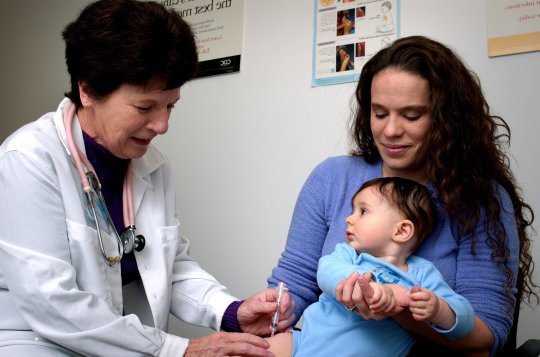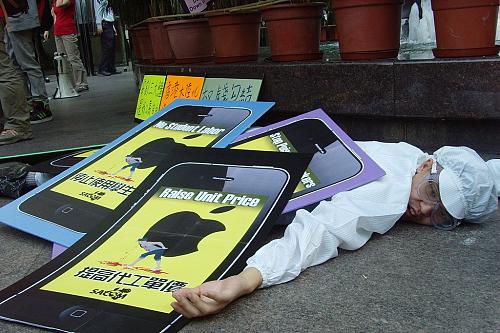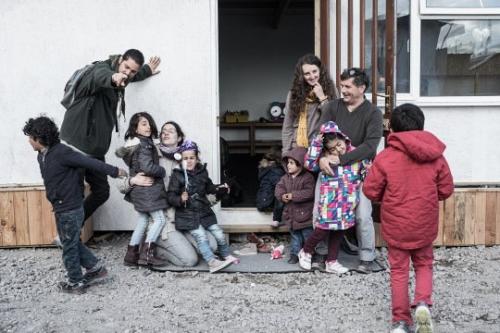Initially published in french by Basta!. Translated by Leslie Thatcher, Truth Out.
An improbable structure stands on the summit of a North Marseille hill, on a little esplanade encircled by huge low-rise buildings from the 1960s. “Welcome to the Kalliste,” exclaims Antoine as he parks opposite the villa. The Kalliste is one of the public housing projects of Marseille’s 15th Arrondissement, served by only one bus line. And this “Addams family house,” as the young doctor calls it, is the future neighborhood health center.
While the mistral-swept sky is still a deep blue, Antoine and Oriane, two of the nine cofounders of the project, conduct a flashlight tour of the building’s three floors. After five years of haggling with City Hall, the owner of the place, it’s finally time for constructing the layout and technical considerations: where an elevator might go, the size of the infirmary, of the meeting room, location of the bathrooms. The space must allow for the organization of other activities besides consultations, such as a working kitchen.
Variously structured as associations, as organs of municipal agencies and as mutual organizations, the 1,609 French health centers in this new network have a different wage system for their multidisciplinary teams that differentiates them from another health care model that also exists in France: multidisciplinary health “houses,” which are free-market groups of health professionals.
The multidisciplinary health houses, legally recognized since 2007, are gatherings of private health professionals — who may be doctors, nurses, podiatrists etc. — around a common project. The health houses that fulfill certain specifications may apply for subsidies from the regional health agency.
The health centers, on the other hand, are local health care structures where a multidisciplinary salaried staff undertakes to combat social health inequalities by using standardized prices for health insurance — which multidisciplinary health houses are not obligated to do. The health centers are authorized by the regional health agency, but may be managed by a municipality, a mutual organization or other association. They tend to be located in urban priority areas — while multidisciplinary health houses are more present in rural milieus.
Within the health centers, health professionals, social workers, customer service assistants and coordinators come together under the same roof. To be recognized by health insurance, the center must use third-party payment, the standard prices for health insurance [on the French government’s price scale] and must provide the means to combat “social inequalities in health.” For in working-class neighborhoods and elsewhere, access to health care is hindered by more than geographical distance from health infrastructure.
“Reintegrating Health Into the Political and Social Fields”
This idea is self-evident for the Marseilles team, formed in September 2011 around the “Massilia health system,” a caregivers’ collective that wants to “reintegrate health issues into the political and social fields.” While all have experience in urban medicine, some of them have also gone through health centers or associations such as Planning familial (Family Planning) and Médecins du Monde (Doctors of the World). Today, they’ve adopted the concept of santé globale (global/overall/holistic health), as defined by the World Health Organization in the Ottawa Charter in 1986.
“We wanted to change the ’space-time’ for health, to be able to talk together among colleagues, to take time with people when it’s necessary. It’s not terribly motivating or possible when one is alone in private practice, paid by the service performed,” Oriane notes.
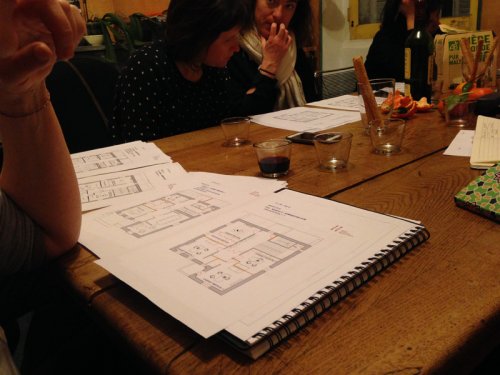
“Our experience has given us the desire to practice a medicine that takes into account all aspects of health, consequently including the pain that results from social violence,” the young woman [Oriane] explains.
“A guy has a stomach ache; often it’s because he’s totally fed up,” Antoine says. The doctors involved were trained in medicine to be competent technicians, “but no one taught us that the problem is not necessarily medical.” These critical young doctors also want to free themselves from the pressures exerted by lobbies. “As much as possible, we’d like to experiment with something other than all medication, all psychiatry, to avoid falling into a medicalization of suffering,” Oriane explains.
Involving Residents in the Health Center’s Life
Associative health centers represent about a third of all health centers in France. But the Marseilles project falls within a “communal health” approach, already proven in Québec and Belgium, but still little known in France. The principle is to truly involve the neighborhood residents in the conception and the life of the health center, to define their needs along with them, to encourage their initiatives. “We want to start on a basis that allows for flexibility, for possibilities of collective organization,” Antoine explains. “We don’t want to come with preconceived notions of public health issues. We think the demand for care should not be produced by the caregiver.”
At Échirolles, in Isère, another team of determined 30-year-olds is getting ready to open the doors of an atypical health center at the entrance to “Village 2,” a priority neighborhood isolated at the end of a tram line constructed for the Grenoble Olympic Games of 1968. Doctors, physiotherapists, social work professionals and “people empowerment” professionals prepared the ground at first with a “communal health diagnostic” effort, begun three years ago.
“The idea got going from a primary question: Since we are mostly white people with university degrees, what does it mean to install ourselves in a working-class neighborhood?” recounts Benjamin, the coordinator of the project. “The diagnostic study didn’t teach us anything surprising about the social situation of the neighborhood. It was more about meeting people, constructing a mental map for ourselves of the neighborhood. Now, we know precisely how inequalities manifest themselves, and also where there are solidarities. We’ve established the beginning of trust with the residents.” Still looking for public and private financing and for permanent premises, the team is nonetheless happy about the opening of a first center, scheduled for September.
A Fragile Economic Model
The great reference point for all these projects in process is the Case de Santé (Health Compartment or Health Place), a small associative body in Toulouse. It offers legal expertise in health care for sick foreigners, social care, video and theater workshops, medical student training and cancer treatment.
Since its opening in 2006, the team keeps on innovating. “La Case” has even become a point of reference for residents of the Arnaud Bernard neighborhood. Here, caregivers and social workers deem that work and living conditions are not side issues, that they have a crucial impact on peoples’ health. In consequence, when, in 2014, the Case was threatened with closure because of a cut in financing, the users mobilized alongside the striking employees.
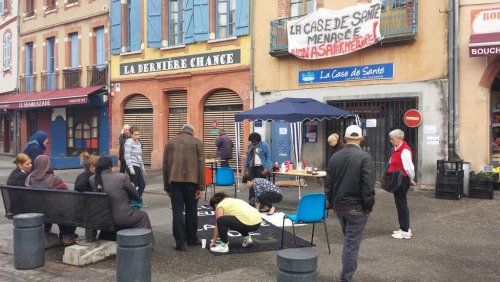
Actually, while all the local decision makers unceasingly boast of the structure’s results, La Case — which eludes any administrative categorization — has to fight to survive. This situation is unfortunately representative of the economic model of health centers, condemned to confront by themselves the deficits inherent in their methods of operation. These militant structures, still in the minority, tackle a conundrum: how to finance their activities outside medical consultations — activities that do not generate revenue, such as the time for social work, but also team coordination time and preventative efforts? Pretty much everywhere, the approach is makeshift. That’s to say, centers seek subsidies from cities, regional health agencies and the French government’s health insurance agency — and use “subsidized positions” (temporary jobs subsidized by the French government that are supposed to help people who would otherwise have difficulty entering the workforce).
Medicine “Adapted to Working-Class Neighborhoods”
The Saint-Denis “Health Place,” another historic model of a communal health center, has not been spared these torments. Originally a research-action program launched in 1986 by Paris University 8 and the Bobigny medical school, the project brought sociologists into the Francs-Moisins neighborhood, one of the biggest slums in the region, which became a “housing project.”
Didier Ménard, a general practitioner now in retirement, saw them show up in his office. “They watched me and they told me: ’You practice a medicine that’s adapted to working-class neighborhoods.’ That allowed us to reflect, to put things in perspective. The neighborhood pharmacist realized that he did a lot more than sell medicine.”
“Since we are mostly white people with university degrees, what does it mean to install ourselves in a working-class neighborhood?”
The neighborhood caregivers formed a mutual aid network and in 1992 created the Association communautaire santé bien-être (ACSBE, or the Communal Health and Well-Being Association), of which Ménard is still president. The residents of Francs-Moisins, famous for their creative problem solving and their involvement in local solidarity networks, trained there and became “health intermediaries” — a profession that did not then yet exist.
Asta and Zahia, already multilingual, became experts in access to rights and to community health services. Élisabeth, secretary of the association and author-composer, studied music therapy, another ACSBE trademark.
“In these sessions, people can breathe, change air, take a break,” Élisabeth explains. “For many, it’s also a way to get out of themselves, to talk with someone who doesn’t judge them. They come because they’re going through a difficult time, because they have problems with work, not for health problems in the strict sense.”
Tracking and Taking Social Inequalities Into Account
In 2008, the arrival of a new generation of doctors allowed ACSBE to open the “Health Place.” The team got together in one location at the feet of the Francs-Moisins public housing towers. Today, the structure includes 21 employees and serves residents Monday through Saturday with or without an appointment. The program posted in the waiting room announces yoga classes, weekly discussions over coffee, and “well-being” and “self-esteem” workshops led by the intermediaries.
“One of the project’s special features is that we were all partners in its construction. That allowed us to provide our own perspective and to understand the stakes involved, notably the financial ones,” explains Maxime, one of the team’s doctors. “We were attracted by the idea of whole health and by the salaried status which brings us protections such as paid vacations and parental leave, as well as control over work time and a limitation on the administrative burden.”
Here, as in Toulouse, the doctors earn on average two or three times less than their free-market colleagues — by choice. Daily, weekly and monthly meetings of the team punctuate the life of the center.
“We were especially motivated by the teamwork with the intermediaries. In our medical course work, there’s no specific training for distinguishing social inequalities in health and taking them into account,” Maxime notes. Adèle, another doctor on the team approves: “Social problems have immediate consequences on people’s health. This issue frequently arises during consultations and forces us to think in a different temporality. When the intermediaries’ work allows us to achieve access to universal medical insurance or a mutual organization, that allows us to advance, for example, by prescribing an MRI for a patient.”
An Essential, but Precarious Job
Here, it’s not a lack of health care structures that poses the problem, but that of structures for access to patients’ rights to services. The intermediaries spend most of their time receiving users in individual consultations.
“People who could be autonomous are blocked by language-related issues,” observes Nathalie, one of the most recent arrivals. “For example, I helped the same lady fill out papers for the social welfare office, the internet access provider and to prepare a letter about noise nuisances.”
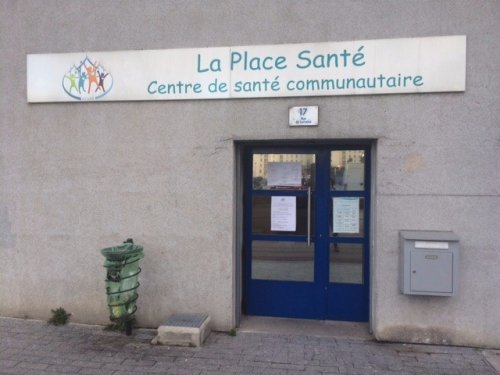
While the intermediaries’ work is critical for the structure, their jobs, financed by subsidies — contracts for adult social inclusion — remain especially precarious. “By definition, these are social inclusion contracts,” explains Emilie, the center’s director. “But here, we have a lot of trouble understanding why we should have to replace our most experienced intermediaries in whom we’ve invested so much every three years,” Emilie says. “Moreover, it’s contrary to the right to work.” The position of center coordinator, created last year, is also threatened.
The Start of a “Cultural Revolution” in General Medicine?
Does a solution exist to the financing problems of these emerging structures? In Saint-Denis, Marseille, Toulouse and elsewhere, they dream of a payment system “per person” — an annual budget allocated to the structures as a function of the number of their users. It’s an everyday practice in Belgium and the United Kingdom that the Syndicat de la médecin générale (left-leaning Union of General Practitioners) has demanded for years. After five years of experimental financing, a national agreement reached in July 2015 between health centers provides for an allocation by health insurance of a specific flat-rate reimbursement, designed to top off the income derived from payment per service.
“Today, there’s a boom in municipal health centers in isolated villages. With a wage system, the communes can attract young caregivers who don’t have the entrepreneurial mindset for private medicine,” notes Richard Lopez, president of the fédération nationale des centres de santé (National Federation of Health Centers).
Young caregivers are the people who Didier Ménard sees as the representatives of a “cultural revolution” in general medicine. “Today, the doctor must accept that someone else looks at his work. That’s not easy for people who have worked on their own for 40 years,” Ménard says. “We show that working in a team allows us to share our anguish and our doubts, to avoid mistakes.”
In spite of the precariousness of finances and bureaucratic impasses, the model of health centers continues to spread. The National Federation of Health Centers counted 150 projects underway in 2015. This May, a residents’ association of the “3 cités” neighborhood in Poitiers will inaugurate its own community health center — a project that the residents’ association itself considered and launched.
Sarah Bosquet
Translated by Leslie Thatcher. Copyright, Truthout. May not be reprinted without permission.
Note: A slightly edited version of the footnotes from the original article have been integrated into the text of this article.
Photo : CC source
– Massilia santé system : © Sarah Bosquet
– Case de santé : © Case de santé


